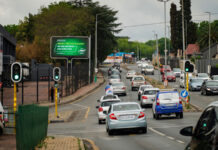A look at the state of retail and digitalisation in 7 countries
Digital Marketer, Jamieson Hill, takes us on a journey around the world to 7 countries exploring the state of online and high street retail in the UK, USA, Canada, Ireland, New Zealand, Australia and South Africa. He puts forward a compelling case why businesses must go digital to survive.
He will explore different factors in each country such as footfall Index, the size of online retail, the economy/unemployment and the extent of digitalisation.
Drawing on articles from the web by retail experts including Google and Deloitte, it assesses the threat to high street retail by e commerce and digitalisation. Also, using DMSS’s own primary research on retail part two we will hear from retail owners in the seven countries. Finally, in part three we ask the question:
Will bricks and mortar retail shops who fail to digitise be left behind?
The Coming of the 4th Industrial Revolution
5G is about to radically alter our societies with Artificial Intelligence. Bricks and mortar retail are part of the tech revolution. We will explore some of the innovations in digital and high street shopping the possibility that those who don’t digitise will be left behind.
Nikki Baird gave a stark warning in Forbes to those retailers who think they will be able to avoid digitalisation. She predicts that the disruption will radically affect the high street retail experience:
“Unfortunately, it will impact them just as much as digital music decimated the music store. When you look at how consumers acquire products, pretty much every part of the shopper journey is being digitized, except for that last physical transfer of goods.”
Nikki Baird, Retail Enterprise Expert and Forbes writer
The 4th industrial revolution and the digitalisation of high street shopping are here…
Part One: The State of High Street Retail in 7 Countries
1) The United Kingdom
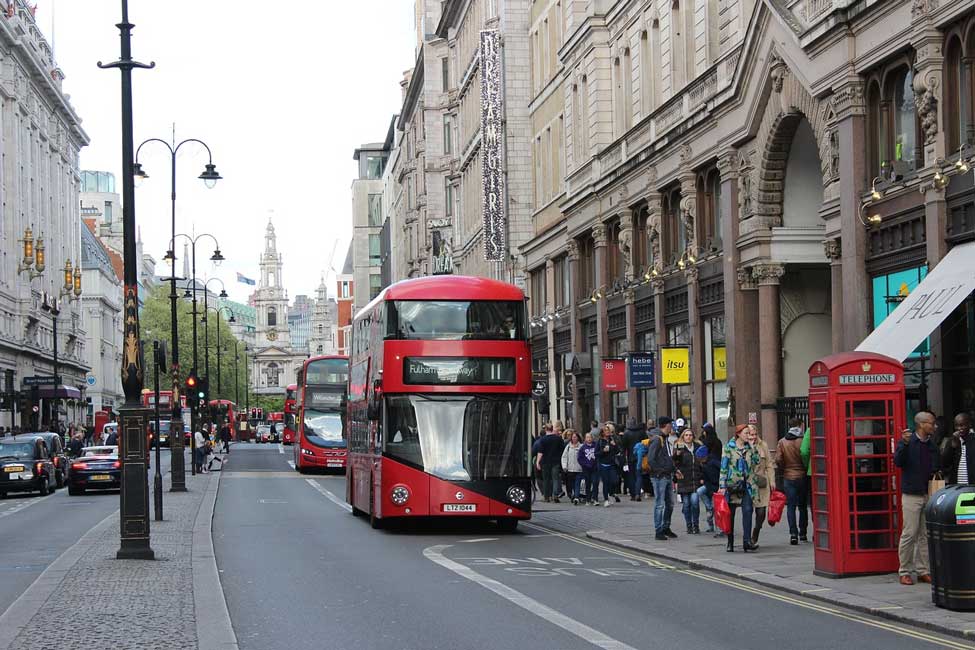
We start our journey on the shores of Britain.
‘A nation of shopkeepers’, Napoleon said of England. If he were alive today, he would probably adjust those words to ‘and a nation of online shopkeepers. For online retail constitutes 1 in every 5 pounds spent.
London’s thriving Oxford street is always rammed packed with shoppers. Tourism still reigns supreme in the capital. Also, Oxford Street and Leicester Square were in the top three for Saturday footfall in Europe in 2019 (Frankfurt in first place)
However, UK high street retail has felt the pinch. Some big-name chain stores went out of business in 2019 – Pound world, Maplin and Toys R Us. Also, established names such as Debenhams and House of Fraser struggled with the fall in retail high street spending. Therefore, the UK retail sector needs to take the warning signals seriously. It was the worse year for store closures for many years according to figures in many years.
“10.3% of High Street Shops are empty (Oct 2019)” BBC News
According to the BBC, over ten percent of shops on the high street are empty. Online shopping has increased, and net profits are falling because customers spend ‘spend one in every five pounds online’. So, while overheads have risen for the high street, their profits are not. This is a question of survival because such a situation is not sustainable in the long term.
With 20% less sales in shops, times are hard. The modern-day shopper is more discerning. and wants a bargain with so much choice online. Also, it is harder for stores to compete on price with online retail. Putting prices up to increase net profits and cover rising overhead costs is increasingly difficult. Especially when Amazon sellers can lower their prices in a fierce price war between online and high street.
Of course, many of the larger stores have an online and high street presence. Take the example of Argos UK, where their website allows you to reserve a product online, so that it is ready to pick up in store. The interface between online and bricks and mortar is a growing trend l more stores following suit.
BBC quoted figures suggest that, “New research also indicates the top 150 UK retailers have 20% more store space than they need and can afford. Some shops such as Homebase, Mothercare, Carpetright and New Look have done restructuring deals with their landlords, closing hundreds of shops between them.”
Therefore, bricks and mortar retail are seeing large chain stores shutting shops to survive. Streamlining is the way forward in UK retail, whereas in the US we see a very different picture in the next section.
Footfall has been declining according to figures from Springboard, the retail analytics company. Since 2015 there has been a fall of up to 1.6% in high street shopping. In 2019, sales fell for the first time in 25 years:
“The British Retail Consortium (BRC) said total sales fell 0.1%, marking the first annual sales decline since 1995.” BBC
Another big factor is retail job cuts. The Centre for Retail Research found that in 2019, the UK Retail industry cut 143,100 jobs. In the first month of 2020, 10,000 jobs were lost on the UK high street. The BRC is warning of a fall of up to 900,000 by 2028. With less staff on board, shops will have to turn to digitalisation to cope with the increased workloads of running stores with less staff.
“2,868 store closures in the first half of 2019 – the highest number in five years, and up more than 6.5% from last year.”
The type of shops on the UK high street is changing. With a net decline of 1,234 chain stores on the UK high street, there is also a rising trend for new shops. Vaping stores, gyms and takeaway food. Therefore, the more traditional shops are in decline, but new genres of stores are opening. In supermarket retail Lidl and Aldi are continuing to expand. In the future, shops need to use digital to know what it is their customers want and make sure their stores are in the right locations.
https://www.bbc.com/news/business-49349703
2) USA
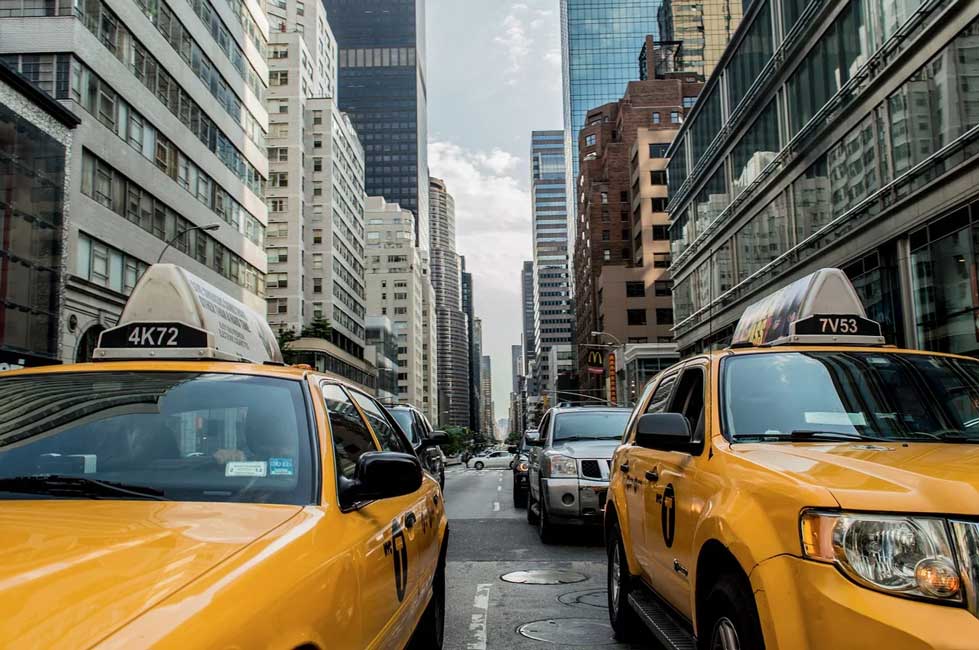
Picture this: you’re walking down the street in New York City, the sights and sounds, a cacophony of entertainment and wonder. Neon lights, the iconic yellow taxis, hotdogs, style, funk, panache, jazz, slap bass and a whole host of eccentric characters of every nationality. This is a city brimming with buzz and cue dos. But unlike the struggling British high street, across the Atlantic, their American cousins paint a very different picture of high street and online retail:
“It’s not in-store vs. online. It’s all retail. Of the top 50 online retailers, nearly all operate stores. Industry-wide, online sales make up 10 percent of all retail sales.”
The interface between online and high street retail in America seems to be further down the road than the UK, as the leading online retailers all have a presence on the high street. What is also surprising is that the number of store closures is being outgunned by new stores opening:
“Retail store numbers continue to grow. For every retailer closing stores, five retailers are opening stores.”
These buoyant figures from the Federation are a great encouragement for US retail and with Amazon leading the way in online retail, the US remains a market leader. A staggering $2.6 trillion comes from US retail and it is the main source of employment:
“As the nation’s largest private-sector employer, retail contributes $2.6 trillion to the annual GDP. No other industry comes close.”
However, it is not all gold dust and smiles because Deloitte figures show that the US economy took its foot off the gas in 2019. GDP declined in the third quarter of the year to 1.9%. However, the forecast in 2020 suggest that GDP growth will fall to 1.6% from the overall 2.3% in 2019.
“Consumer spending is the lifeblood of the retail industry”
Furthermore, consumer retail spending is predicted to slow down to 2.2 percent in 2020 from 2.5% in 2019. In 2019 the US also saw 9,300 stores shut by the big guns including ‘Forever 21, Walgreens, Dress barn, GameStop, Gap’ and other chains’. Core sight Research stated that it was the largest number of closures in a year with a jump from ‘about 60% from the 5,844 the firm tracked in 2018.’
The predictions are that by 2026 more than 75,000 stores may close according to UBS investment bank. So, it isn’t all rosy in the US of A…But the big stores certainly seem to be leading the way with the interface between online and on the high street.
3) Canada

Next, we travel overland to Canada, a hop, skip and a jump from the USA. It’s only just over 90 minutes by plane from New York to Toronto. Toronto is a city rich in history with one of the most diverse communities in the world. With a myriad of shopping outlets, it is a shopper’s paradise. Winter temperatures drop to an average of minus 1 from December to February, so only for the hardiest of shoppers. But has Winter come for Canadian bricks and mortar retail?
The prediction is for Canadian e commerce to increase by 30% by 2023 which would equal about $60 billion of online retail. However, bricks and mortar stores are still a big part of Canadian life. A massive 76% of online consumers visit stores before buying online.
“The role of the store is to validate the purchase, confirm that it’s the product they want and to touch and feel”, ‘said Jennifer Li from Deloitte.
Furthermore, pre-purchase is mainly completed online. This is something stores like Argos do in the UK where you can reserve or buy online and then pick it up in store. This change shows retailers need to be looking at more than just what happens in the high street shop. The whole online experience is intrinsically linked now to bricks and mortar.
“Your website, your app is the primary interaction that shoppers have with your brand. It is the first store they visit and often the most important”
Eric Morris, National Director of Retail, Google
A huge stat to wake up high street retailers is that in the Google Deloitte Consumer survey, a massive 89% of Canadians say they purchased based on their DIGITAL EXPERIENCE. Sorry to shout at you with capital letters, but that is huge. It is clear evidence that if you are a high street retailer in Canada and you offer a poor or average digital experience through your websites and/or apps, then you are going to lose prospective customers to the stores with slick A.I. websites and apps.
Deloitte and Google 2019 Online Consumer Survey showed that consumers want mobile payment options to simplify the retail process. Also, digital innovations such as Augmented Reality (AR) are the near future because they allow customers to see how products work and fit into their lives.
“Think about the Now and the Next”, says Eric Morris, National Director of Retail for Google.
The RCC warns that only 23% of Canadian businesses are ‘leveraging the data they collect compared to 46% in the US’. This means that Canadian businesses are going to have to develop and enhance their analytics ability to be competitive in the global market.
Deloitte’s Jennifer Li gave the wake-up call to Canadian business when she said,
“Canada – we are half of the US in terms of our mindset of how-to bring data and digital together to drive insight of the consumer.”
Canada’s Unemployment Rate dropped to 5.50 % in Jan 2020, from 5.60 % in Dec 2019.
Hundreds of shops closed in January 2020 with well over 700 stores affected. This was streamlining in some cases by big chains, but in some cases, businesses going into administration. Industry experts are indicating that new stories will open in Canada this year
‘including new international brands that will include fashion, food and beverage, fitness, and entertainment’, states Craig Patterson, a Retail Council of Canada consultant. Craig remains upbeat for 2020 and is convinced that innovation will revive ailing high street retail:
“Despite the extensive list of store closings above, many landlords, brokers, and retailers have high expectations for this year as innovative concepts expand while some outdated brands shutter stores. The retail industry is changing amid a shift in consumer spending and preferences. Online shopping continues to grow faster than brick-and-mortar sales, though many still seek out physical retail experiences for a variety of reasons.”
It is those data insights which will consider in greater depth in part three of this article. But for now, we skip across the Atlantic to the poetic shores of Ireland where music and ale flows so plentifully, and the Irish people seem stoical in the face of a rainy and often harsh climate.
4) Ireland
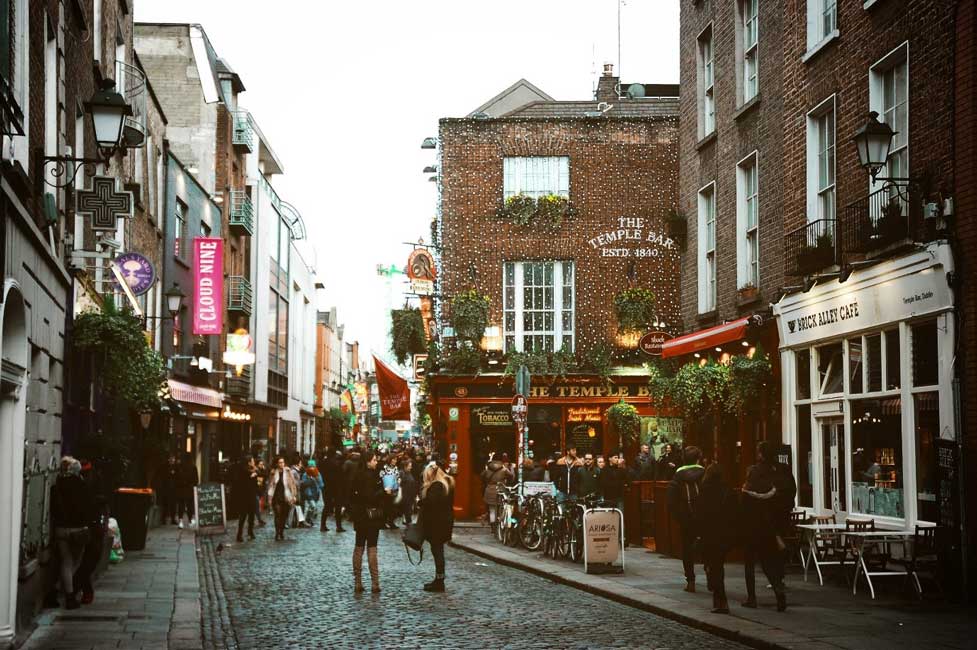
Next on our journey we travel back across the Atlantic to the shores of EIRE. The picture of retail we find there is one of a nation embracing smart technology. But also, a nation of eco-minded shoppers with sustainability and buying Irish at the forefront of their minds. It was a very welcome surprise to see just how switched on Ireland is to the digital revolution. This green and pleasant island is certainly at the cutting edge when it comes to technological change.
Cast aside archaic visions of old men drinking Guinness into the early hours of the night, dancing leprechauns and images of Father Ted. This is a nation with its finger on the button regarding sustainable consumerism and digital tech.
With a 4,937,786 people Ireland is second smallest in terms of population of the seven countries. In March 2019, the PWC published an invaluable report which focused on 6 key points for Irish retail:
- ‘Considering customer experience and values.’
- ‘Understanding your customer is crucial.’
- ‘The store remains front of mind.’
- ‘It’s about mobile first.’
- ‘Sustainable customer experience is essential’
- ‘Engage consumers through emerging technology’
The good news for bricks and mortar retail is that 54% of Irish consumers still shop in store weekly, except for groceries. Nevertheless, it is not an easy period for Irish high street retail because the disruption of e commerce means that it is more difficult to secure customers. The PWC’s advice to Irish retailers is:
“A combination of caution and increasing sophistication means retailers must work harder than ever. In the current marketplace, the combination of the right product or service delivered with superior customer experience is the gateway to retail success.”
PWC, March 2019
The PWC of Ireland see consumer values are now a major part of the customer purchasing journey. Therefore, they recommend that Irish retailers put the customer at the heart of the process instead of the product. The PWC expressed that ‘personal preferences of customers and needs becomes the focus of building a holistic shopping experience’.
The PWC report in 2019 also revealed that high street retailers and brands can no longer use the traditional approach of focusing on certain segment of chosen customers. It is consumers who decide their purchasing and choices are becoming more influenced by the ‘distinctive value and customer experience’.
Shopping on the high street is still popular in Ireland. It is an opportunity for retailers to fully engage with their customers. But the PWC recognises that with the growth of online retail, high street retailers need to create ‘a seamless combined store and online experience’.
In Ireland, consumers use their phones for retail research and purchasing has grown rapidly over 12 months. Furthermore, it is recognised how customers research online before buying products on the high street. Also, social media is important in Ireland for influencing shopper’s choices on the high street. Irish retailers are striving to create ‘seamless shopping experiences’ and platforms between the online and high street retail
Irish consumers are keen supporters of sustainability with a massive 52% seeking to avoid plastic packaging. Also, a huge 67% of the population believe that ‘buying Irish’ has a beneficial effect on the economy. This suggests it may be harder for international companies to break into the online market in Ireland with such consumer patriotism. Companies in Ireland which are ‘socially, environmentally and locally-conscious retailers and brands who can demonstrate responsibility and sustainability have a competitive advantage.’
In addition, Irish customers are prepared to pay more for sustainable and ethical products. This is a nation of ethical and ecological buyers who prefer to buy local.
Ireland’s high street retailers need to keep up to date with innovations in tech because the average Irish consumer embraces new smart technology. Therefore, Irish retailers need to engage customers through ‘emerging technology’ and develop their strategies accordingly.
Economically, Ireland is in a good place for unemployment which is at a 13-year low of 4.8%. However, the EU predict slower growth for the future, even though in the Autumn of 2019 Ireland had one of the fastest rates of economic growth.
5) NEW ZEALAND
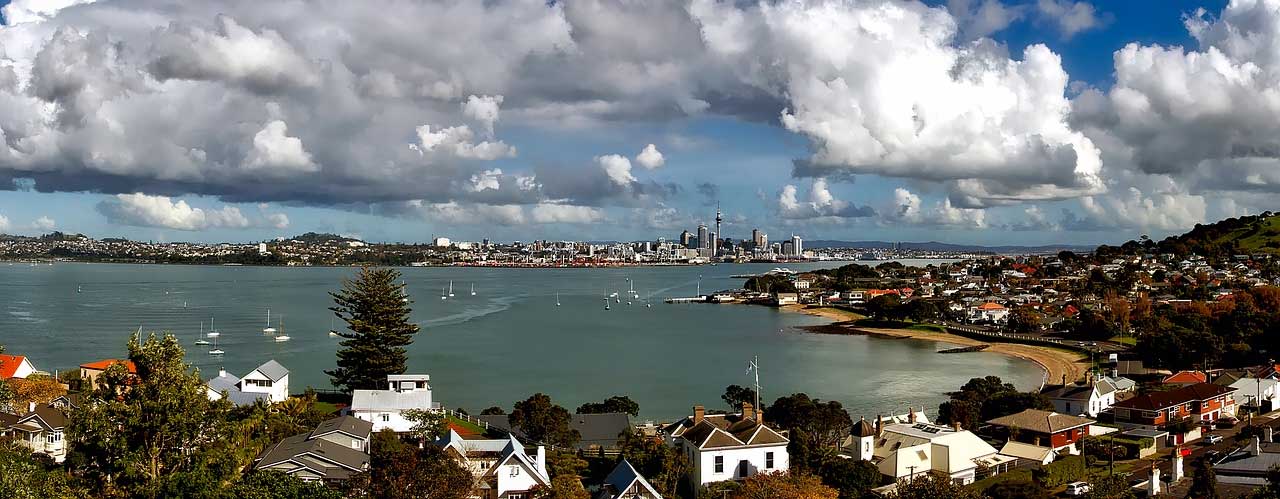
Heading north from Ireland we next fly over 18,000 kilometres to New Zealand. As the smallest country by population at 4,807,325. A beautiful island famous for its rugby, incredible landscapes and noble Maori native people. Also, well known for being the film location for the Lord of the Rings and Bilbo Baggins.
The retail sales index for New Zealand was no Hobbit’s celebration party in October with sales down 7.6 % in October and 2.8% in November. Black Friday stemmed the decline late November, but December saw a huge -22.1% drop. Reports suggested that the profit margins fell due to severe competition, poor confidence in the economy and the government’s economic strategy. However, the first month of 2020 was a step away from the downturn with a 5.1% increase compared to 2019.
Unfortunately for New Zealand, despite the improved January, with the onset of the coronavirus retail sales are going to take a big hit. 400,000 Chinese tourists come every year to New Zealand they spend an estimated $4000 to $5000 each. Retail Minister NZ chief executive Greg Harford said that retail businesses were concerned about the fall in tourists with the borders closed due to the virus:
“That will certainly have a big impact on the retail sector, and we have heard that some retailers are already beginning to tighten their belts in preparation for that.”
In the first quarter of 2020, 27 per cent of retailers looked to employ fewer staff, an increase from 16 per cent in the last quarter. Reduction of staff levels is normal after the festive period, but it is higher than usual. There is a suggestion that government employment policies have meant less retail jobs with higher wages. In the retail sector sales growth is sluggish, so with profit margins being squeezed employment levels are dropping.
On the positive side, prices for retailers have stabilised for 70% of retailers, but with higher and rising costs prices look likely to rise. Nevertheless, there is fierce competition in the retail sector which will keep price rises in check.
The overall effect of the coronavirus and travel ban for Chinese tourists is yet to be seen, but with 400,000 Chinese tourists every year, the impact for February is expected to be a deficit of about $100 million for the tourist economy and $300 million for the economy as a whole by the end of March. The net effect on retail remains to be seen.
BDO New Zealand is an organisation with a deep understanding of the retail sector and they stated recently that:
“It’s more important than ever that retail businesses develop a deep understanding of the trends affecting the industry. Not only will this help retailers stay competitive in an increasingly globalised and online world, it will also enable them to locate new and exciting opportunities for growth.”
In many of the 7 countries on my digital journey I have encountered the rallying cry that this is the death of retail. However, quite the opposite trend seems to be emerging. Not the death, but the transition into something else and those companies that fail to digitalise fall by the wayside. It has always been true that innovation is the key to survival in a competitive business world. More and more countries are not just facing competition from within their own national boundaries, but from e commerce globally.
The key trends BDO identify in New Zealand are:
- Staffing cost
- E commerce
- Technology
- Productivity and efficiencies
Staffing costs: with an increase in the minimum wage, it is very hard for retail business to properly invest in staff. NZ Retailers are trying to create customer experiences which are unique which can give them the edge over online shopping.
E-commerce: a lot of NZ retail companies feel compelled to get into online e commerce as well if they are to survive in the digital age. The main problem is that a lot of them lack a proper online strategy to marry their high street and online presence. Therefore, the digitalisation of the high street is growing in momentum in New Zealand.
Technology: BDO advises retailers that it is not just online shopping which they need to embrace. Also, there are other new technologies which enhance the customer retail experience in store. The main drawback is having enough funds to invest in the tech when facing rising costs for staffing and a sluggish economy.
Productivity and efficiencies: One of the main topics for retail in NZ has been increasing staff productivity but at the same time developing process efficiencies. The process savings can impact the customer experience in store, which ends up losing customers for a shop to other retailers or online stores.
BDO are an organisation who have a ‘deep understanding of the issues’ facing NZ retail. Their offer advisory services for strategy and technology to help businesses survive.
BDO Technology Examples
- Omni channel approach
- Nike table which allows ordering and selecting
- Beacon technology uses Bluetooth to connect with customers’ mobile devices, giving them personalised adverts, recommendations and discounts.
- Alternative payment options such as Apple Pay, or Google Pay allows customers to avoid queues.
- Predictive data analytics allows you to enhance your inventory and stock management, as well as optimise store layout.
6) Australia
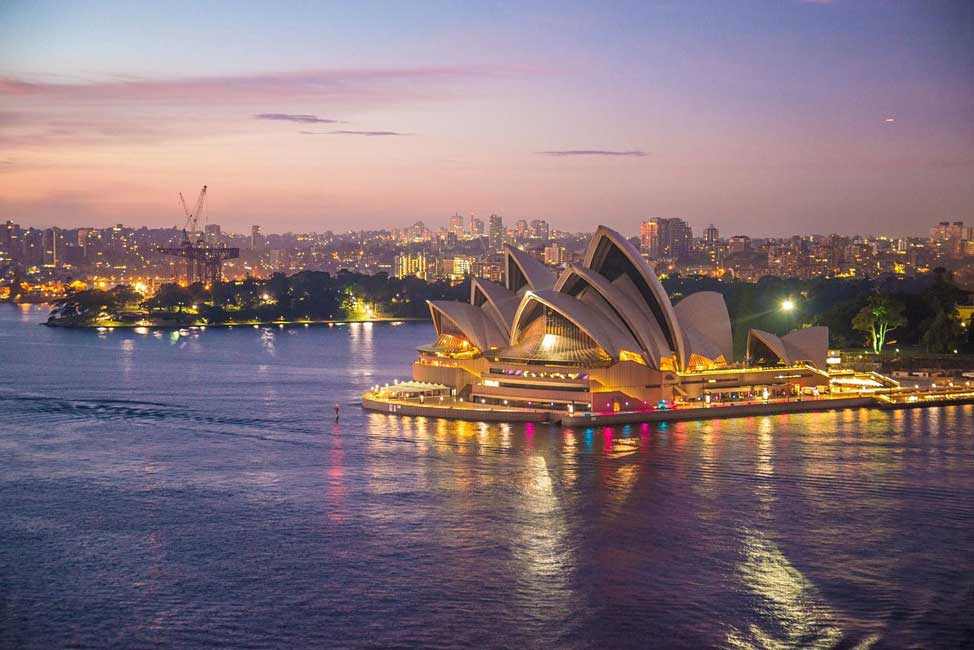
Heading North West, we travel over 4000 km to reach Australia. This beautiful island is home to 25,499,884 people. Famous for its variety of landscapes from deserts to beautiful seaside coasts, Australia has dominated the headlines recently due to the raging bush fires. Tragic scenes as people and wildlife flee the infernos engulfing the land.
Meanwhile, the trend of online retail changing the consumer habits of Australians is very similar to the other 6 countries covered in this article. Bricks and mortar are being transformed. Along with this change is a decrease in the amount of space needed on the high street. More and more stores are closing stores and downsizing as e commerce grows. The change is being spearheaded by the disruption of e commerce retailers that exist exclusively online or in the main part. As this trend persists, both online retailers will plough more money into the digital experience for their customers. This will ultimately take even more customers off the high street and into the world of online shopping.
I came across a fascinating article by Jenny Cermak’s called ‘Retail Ghost Town’. She speaks of the trend that lots of retailers are selling space on the high street in order to maintain high growth. The selling of space in retail contrasts with the decrease in footfall. Cermak says that his apparent growth in selling space and the decline in footfall is probably due to an ‘optimism bias’. This basically means some retailers think they are immune to the changing market conditions which will affect everyone.
However, they are misguided because the digital revolution is already here and those stores who invest in improving the customer experience in store will prosper. Those stores with a seamless interface between their online and in store retail experience will be more attractive to customers seeking an enhanced experience.
While the Luddites refusing to digitalise will mostly certainly dwindle, apart from traditional ‘old fashioned’ shops whose retro, bygone era are part of their charm (think Olde Worlde Sweet Shops!).
It is the death of old retail to make way for the new. Nevertheless, high streets stores will need to reduce their store space as overheads rise, so that way they can still increase their sales and net profit.
Ecommerce is massive in Australia, currently ranking as 10th in the world of online shopping. The Australian E commerce market will be worth a staggering A$35.2 billion by 2021. That is about US$25.2 billion. Figures in 2019 showed that 8 out of 10 Aussies shopped online and that this year 1 in 10 products would be bought online.
Over 80% of Australians were shopping online in 2019 and it is predicted that this will rise to 85.2% by 2021 with 22 million people shopping online. When you consider that the population is just over 25 million, that means most people are shopping online.
The global organisation BDO also operates in Australia in 9 different locations. BDO highlights the need for the retail industry to be innovate and stay ahead of the game with the changes affecting retail as a global industry. Competition is on the rise with as many 40% of Australian buying online from China. The US was next highest at 21% and then the UK at 14%
. (https://www.webalive.com.au/ecommerce-statistics-australia/)
The retail economy is also being affected by the bush fires, coronavirus and general uncertainty. BDO remains positive and sites the opportunities for retail business to innovate and change the way they do business to gain more customers. Again, it is down to the enhanced customer experience which we have seen as a trend across the other countries. Australia needs to take a leaf out of the USA’s book and have a seamless merging between bricks and mortar and online. Certainly, the death knell cries of ‘high street shopping is dying’ abound aplenty in Australia as they do in the UK. But this is a defeatist attitude. It is about getting out of the ruts and the old ways of doing things and studying best practice abroad to be a true omni-channel, high street and online player in the modern age.
BDO picks up on some of the trends and topics both positive and negative facing the retail industry in Australia. Firstly, 3D digital printing will create new job opportunities in the future. This is next level innovation in terms of enhancing the customer experience.
On the negative side of the coin, overseas retailers are seeking to increase their market share by challenging both online and on the high street in Australia. With borders closed to visitors from China with the coronavirus, Australia will take a hit over tourism and the money they spend in shops, but also it maybe that Australians turn to domestic retail if purchases from China are currently blocked or slowed by virus restrictions.
There is certainly pressure on Australian high street retailers to stay open longer and later in line with demand. It is also true that there is a labour shortage in retail which means there are job opportunities out there. However, maybe the millennial ‘X factor’ generation don’t want to be shop assistants and have grander dreams of power and position.
Rising debt and use of credit cards and an unemployment rate of about 5.1% means that consumer spending is cautious. But when compared to our last country South Africa’s unemployment rate, it is positively rosy in Aus.
7) South Africa
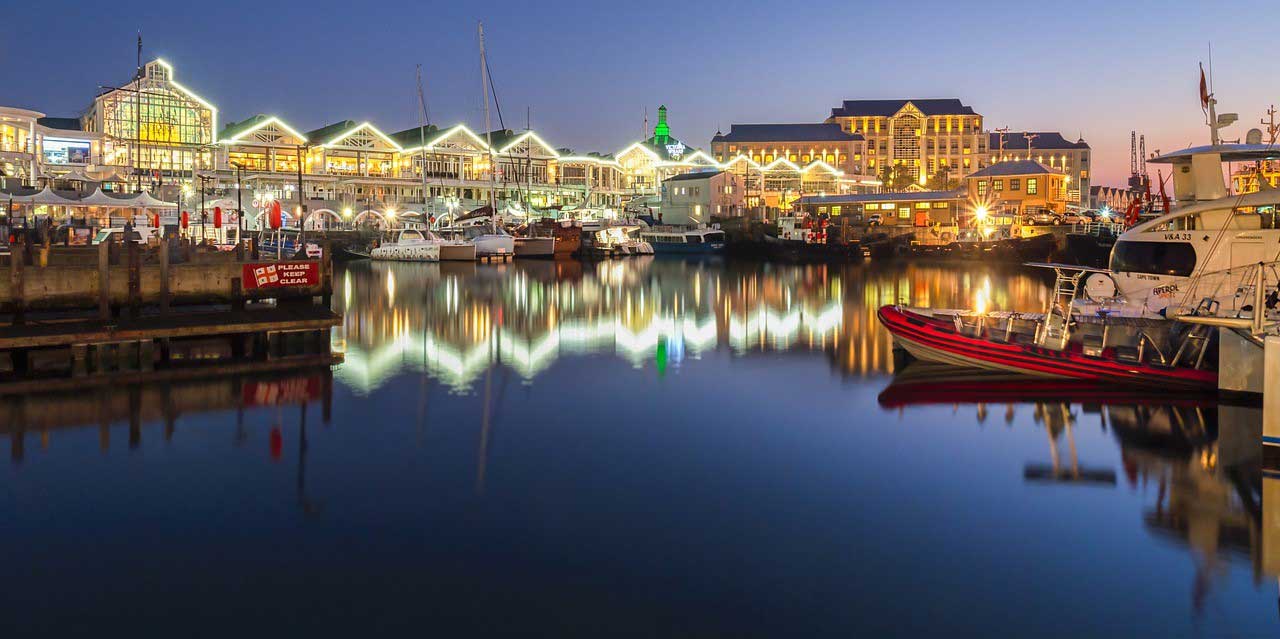
Finally, we head West from Australia to South Africa. It takes about 12 hours and is a distance about 10,500 km. Quite a trip. A country famous for its warm and hospitable people, incredible landscapes and wildlife, a solid rugby team and the distant memory of the notorious vuvuzela in the 2010 World Cup!
With a population of 59,308,690 people this is a big country that packs a punch. But with unemployment at 29.1% in South Africa and sensitive consumers who don’t like big changes to brands, SA is a tough nut to crack. The good news is that Retail footfall remains high at about 76% of shoppers still visiting high street stores.
Digitalisation is yet to fully hit the shores of South Africa like it has done in the other 6 countries. With a sluggish economy struggling with high unemployment and immigration and e commerce dominated by a few big boys such as Takealot, South Africa is bracing itself for change.
Recently, I sat watching a BBC world news documentary on South African tech and e commerce start-ups and it came across very energetic and determined to take on national competition and global markets. It is true that in times of high unemployment the spirit of entrepreneurism can be strongest because faced with the prospect of no job, creating your own business is a necessary option. It is yet to be seen how successful retail businesses working to an omni-channel approach will be in South Africa. With 6.7 million people out of work, that is a lot of untapped labour for digital start-ups and retail high street shops to take advantage of.
One topical trend that I came across in South Africa as I was diving down retail rabbit holes on the web was the expansion of big supermarket chains into townships. South Africa’s four biggest supermarket retailers – Shoprite, Pick n Pay, Woolworths, and Spar – have opened smaller stores in the townships.
Woolworths was once a famous fixture on most British high streets. It changed to an online retailer to keep going in 2009, but it finally folded online in 2015. Only to be taken over by the brand ‘Very’. Though it used the name of the global retailer Woolworth started in 1879 in the USA, the South African Woolworths had no historical connection to America.
The main effect of the big four supermarket chains is partially the cause of the demise of several small retailers and spaza shops. A report found that, “There has been a decline in the number of small independent grocery retailers operating in non-urban areas following the entry of national supermarket chains.’
The growth of the big four supermarkets into the townships has been prompted by the success story of what one man calls ‘Kasinomics’. GG Alcock is the author of Kasinomics – African Informal Economies and the People Who Inhabit Them. He explains that ‘Kasi’ is the up-to-date slang for townships. So, he took the word ‘Kasi’ to make the term ‘Kasinomics’ to describe the economy of the townships. Alcock describes a ‘huge revolution’ happening in the townships with thousands of food outlets making R87 Billion a year ($5.8 Billion). Referred to as the ‘Spaza sector’, it has over 100,000 small stores generating revenues of R200 Billion in a year ($13.33 Billion dollars). Also, traditional medicine such as herbal treatments has a workforce of about 200,000 people bringing in about R18 Billion a year
So, the expansion of the big four supermarket chains is no surprise with so much money at stake. Many of the township businesses are not recognised by the government, but they are employing thousands of people and making high profits. If they were included the SA unemployment rate would certainly fall.
In South Africa small businesses employ 10.8 million people which is 66% of the total workforce. So, if you are a small business owner in SA then you should realise how important you are to the economy, if you aren’t already aware. 17% of the economy are small retail businesses. The South Africa government plan to reduce the unemployment rate down to 6% from 29% by 2030 by increasing the number of small businesses. An ambitious, but worthy plan. Retail is a major part of that small business economy, but it is faced with several obstacles.
One of which is load shedding. The electricity that people use is generally produced and supplied by companies. It means when electricity companies cannot cope with the demand for electricity from customers, it must cut the supply in some areas i.e. a blackout, in order to maintain its supply levels. This is very problematic for I.T. and digital online companies because without electricity they cannot operate, and it results in the loss of customers and revenues. As well as electric power cuts there can be water cuts, rioting, crime and racial violence towards immigrants.
Small businesses in SA struggle with cashflow and demand for goods with the economy slow and unemployment so high. The concept of digitalisation cannot be taken onboard by many small retail businesses as they are more concerned about surviving a slow and shrinking economy which has a lot of red tape and tough employment legislation making it difficult for SMEs. Small businesses in South Africa have low numbers of staff and they are too tied up in daily tasks to embrace digital. However, some businesses are starting to listen to the opportunities on social media platforms, but many are not sure how to enter the online market. Therefore, it may take some time, but the seeds are certainly there.
Without doubt, South Africa is seen as a good opportunity in which to invest into at the moment. There is a strong entrepreneurial spirit there. In fact, in 2020, Bricks and mortar retail is still ruling the roost in South Africa despite the trends seen in the US and the UK. We saw that over 10% of shops lie empty on the UK high street, whilst America seemed to have grasped a seamless interface between online and instore. However, in South Africa high street retail is strong with three quarters of South Africans visiting a real bricks and mortar store every week.
With high street stores still bringing in most of the profits, it is relatively low risk as an investment. Online retail is currently expensive and unprofitable. It is hard to gauge the metrics of how much profit has been made from putting money into online retail. Moreover, a study by Visa showed that:
“63% of South Africans said they preferred to make purchases at a mall. Another study by Urban Studies found that 76% of South Africans visit a mall at least once a week.”
South African investment in online retail is very limited now and does not have customer engagement experiences that the US and UK provide. An Accenture study predicts that
“South African retailers are therefore taking a narrow approach to building ecommerce businesses. They are not investing in creating the full range of convenient and engaging online experiences that consumers are coming to expect and that pure-play ecommerce companies provide,” However, expert predict that in the future the increase in online retail in South Africa will be inevitable.
So, we end our digital journey across seven countries. Next, we examine some of the feedback from retailers from the countries.
DIGITALISATION OF RETAIL SOURCES:
1) FORBES 2018 https://www.forbes.com/sites/nikkibaird/2018/03/13/what-digital-transformation-actually-means-for-retail/
2) RETAIL CANADA – https://www.retailcouncil.org/community/digital-retail-technology/
3)EDELMAN DIGITAL:
4) RETAIL COUNCIL CANADA: https://www.retailcouncil.org/community/digital-retail-technology/
5) NIKKI BAIRD, FORBES: https://www.forbes.com/sites/nikkibaird/2018/03/13/what-digital-transformation-actually-means-for-retail/#30b659770386
5) BBC 09.01.2020 https://www.bbc.com/news/business-51035672
6) BBC 23.10.2020 https://www.bbc.com/news/business-49349703
7) BBC 27.01.2020 https://www.bbc.com/news/business-51258659
8) PWC Ireland https://www.pwc.co.uk/industries/retail-consumer/insights/store-openings-and-closures.html
9) US Deloitte https://www2.deloitte.com/us/en/pages/consumer-business/articles/retail-distribution-industry-outlook.html
10) Footfall in Europe stats https://locatus.com/en/blog/retail-rankings-of-europes-major-retail-destinations/
11) Great Toronto Shopping Spots https://www.tripsavvy.com/great-toronto-shopping-spots-1482044
12) Canada Unemployment rate https://www.ceicdata.com/en/indicator/canada/unemployment-rate
13) Store closures in Canada 2020 https://www.retail-insider.com/retail-insider/2020/1/hundreds-of-stores-to-close-in-canada-in-early-2020-analysis
14) New Zealand Retail Council http://www.retail.org.nz/about/future-retail
15) New Zealand Retail Council – Future of Retail http://www.retail.kiwi/about/future-retail/technology-and-retail
16) Australian Retailers Association https://www.retail.org.au/australian-retailers-association/
17) Ireland https://www.pwc.ie/reports/irish-retail-consumer-report-2019.html
18) New Zealand Coronavirus effect:
19) NZ RETAIL PDF file:///C:/Users/three/Downloads/RetailRadarReport-FourthQuarter2019.pdf
20) New Zealand Retail – Issues – Trends https://www.bdo.nz/en-nz/industries/retail/retail-issues-trends
21) NZ Deloitte https://www2.deloitte.com/nz/en/pages/consumer-business/articles/global-powers-of-retailing.html
21) Australia Bureau of Statistics file:///C:/Users/three/Downloads/85010_jan%202019.pdf
22) Australia ‘Retail Ghost Town’ https://www.mckinsey.com/featured-insights/asia-pacific/retail-ghost-town
23) Australia – beginning of the end https://7news.com.au/business/retail/beginning-of-the-end-decaying-shopping-centres-struggling-to-attract-customers-c-693815
24) South Africa Retail Story Closing Shops and Cutting Jobs https://www.cnbcafrica.com/videos/2020/01/13/sa-retail-story-closing-shops-and-cutting-jobs/
25) South Africa Bleak December Sales https://www.thesouthafrican.com/business-finance/sa-retail-december-sales-impact-2019/
26) South Africa Kasinomics Township Entrepreneur https://a4e.co.za/kasinomics-township-entrepreneur/
27) South Africa Retail Giants https://www.dailymaverick.co.za/article/2019-12-17-retail-giants-face-having-township-wings-clipped/amp/
28) Damage to NZ Economy from coronavirus https://thespinoff.co.nz/business/04-02-2020/what-impact-will-coronavirus-have-on-new-zealands-economy/
29) South Africa Online vs high street retail 2020 https://www.thesouthafrican.com/news/business-finance/online-retail-versus-stores-sa-february-2020/
COPYRIGHT FREE PHOTOS
2) LONDON HIGH STREET: Picture link: https://pixabay.com/photos/london-shopping-england-2268971/
3) US DOLLAR: Photo: https://pixabay.com/photos/money-dollar-american-cash-2173148/
4) IRELAND: https://unsplash.com/photos/tnzzr8HpLhs
5) NEW ZEALAND https://pixabay.com/photos/aukland-new-zealand-bay-harbor-1738274/
6) AUSTRALIA https://pixabay.com/photos/sydney-opera-house-sydney-354375/
7) SOUTH AFRICA https://pixabay.com/photos/africa-architecture-blue-hour-boats-4372120/
8) CANADA https://www.pexels.com/photo/people-gathered-in-front-of-toronto-freestanding-signage-1750754/




































